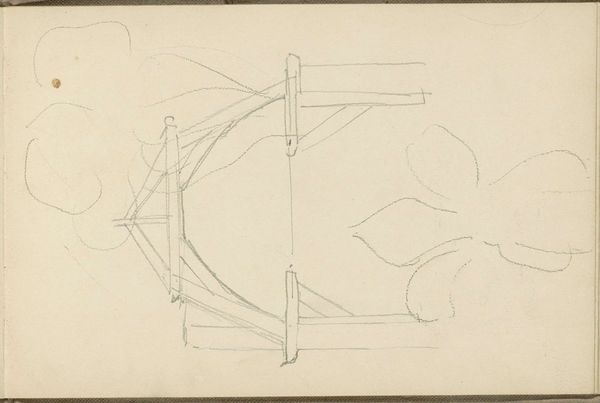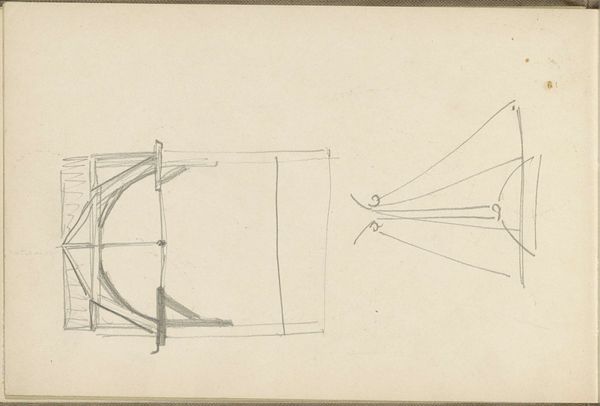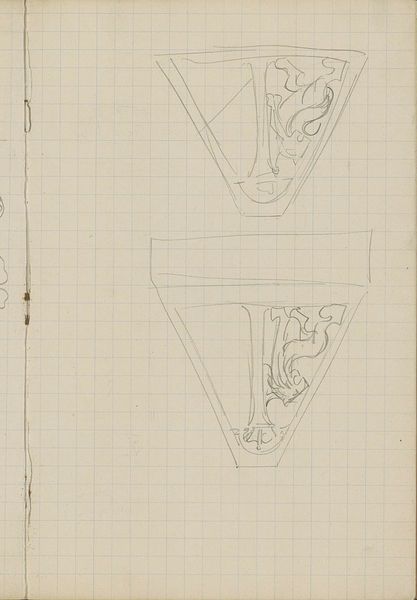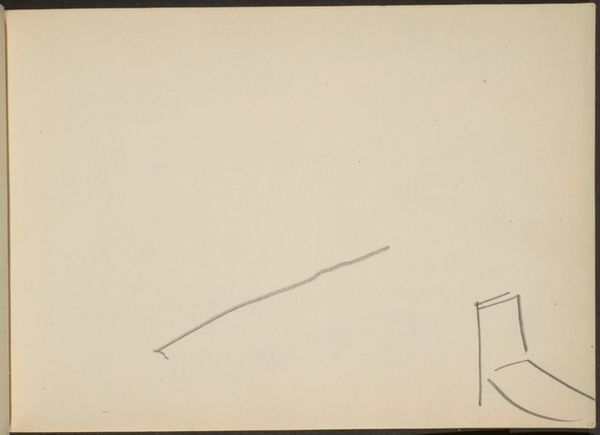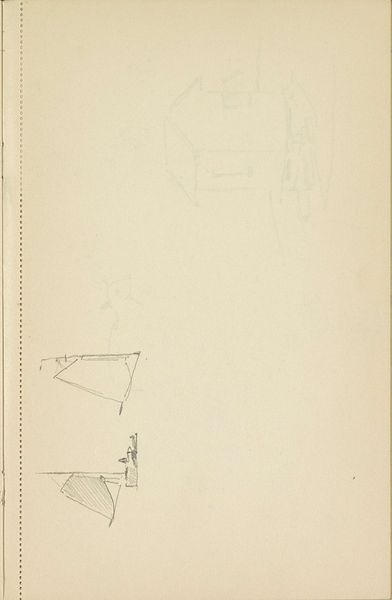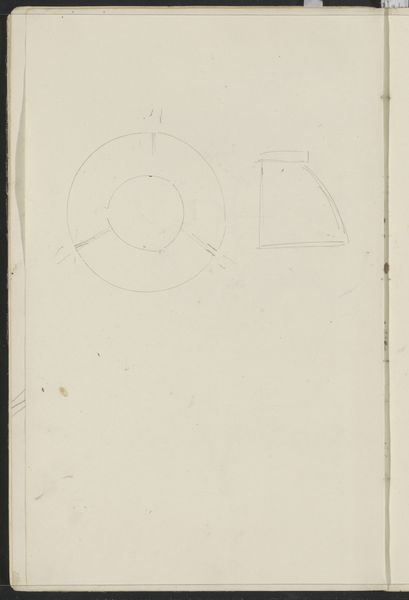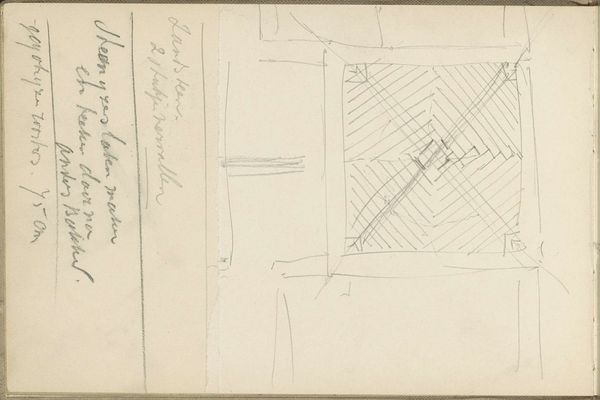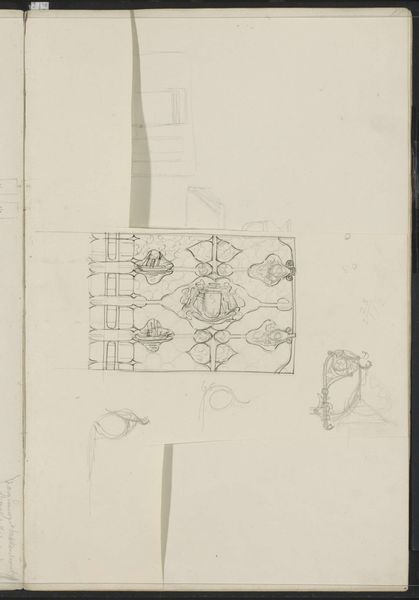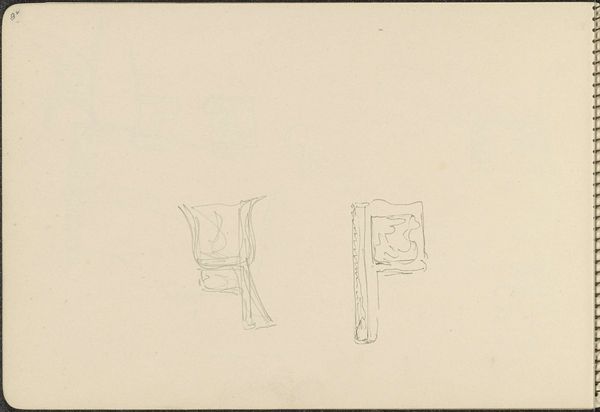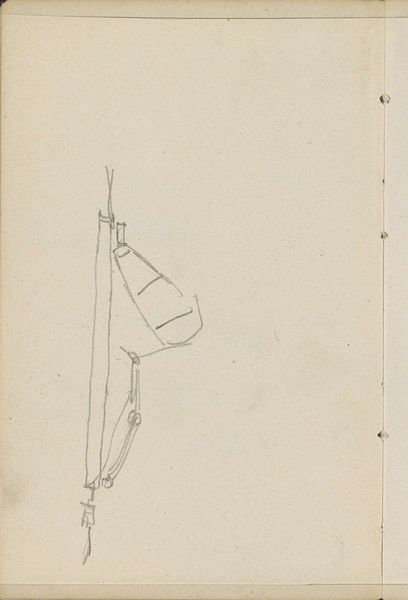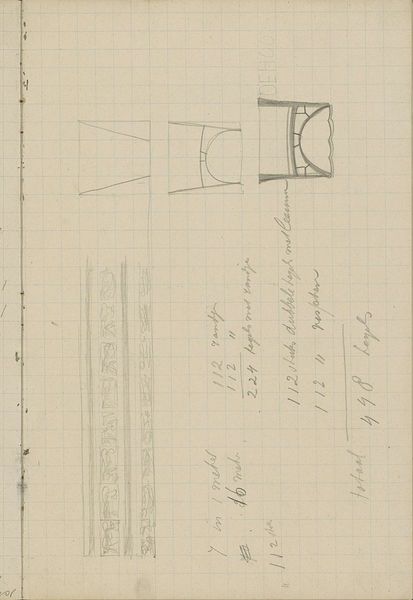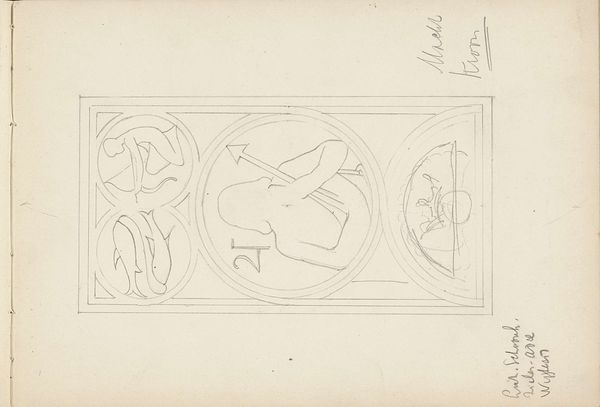
drawing, pencil
#
drawing
#
art-nouveau
#
geometric
#
pencil
Copyright: Rijks Museum: Open Domain
Curator: This drawing, entitled "Studieblad, onder andere met een vierkant," or "Study Sheet, Including a Square," was created by Carel Adolph Lion Cachet around 1905. It’s currently held here at the Rijksmuseum. Made with pencil on paper, it has a casual air about it. Editor: Immediately, I see what feels like an architect's hand at play—a sketch hinting at broader social structures. The geometries offer both precision and perhaps some deeper coded meaning regarding the society of the time. There’s a strong sense of planning, or blueprinting…but for what purpose? Curator: Precisely. Focus, for a moment, on the largest shape depicted: a square, meticulously hatched with diagonal lines creating depth and texture, and inside there is what looks like a flower or perhaps an architectural rosette. Consider how the crossing lines, create an almost palpable tension. Then there are what looks like a corbel and, well, a strange half-circular sweep with an inscription. Editor: Indeed, but consider what the geometric shapes actually imply—perhaps, power structures. The presence of geometry implies rigid hierarchies; is this some form of coded class division in Cachet's surroundings? The notations on the side become more significant. Words about "balen meel", which is a shipment of sacks of flour, suggest something about Cachet's views on economics or food supply? Curator: It’s an interesting line of inquiry to contextualize the sketch within industrialization or consumerism of that period, though I believe his use of line and shadow is simply the study of form—an observation, but there is a lovely looseness that transcends mere geometric rendering. See how the weight of the pencil line varies. The textures suggest a very haptic, sensory rendering in which the materiality of objects and architectural elements becomes the focal point of expression. Editor: I recognize your focus on visual form, but I urge you to think critically of whose stories we value. How does this emphasis reflect, say, a neglect of socio-economic interpretations about work and daily labor reflected here by sacks of flour? Curator: Ultimately, these disparate impressions reveal art's multilayered effect, wouldn't you agree? It seems we have jointly made an observation—to look is simply to be more engaged with art itself. Editor: I couldn't agree more. Hopefully our exploration will serve to highlight the significance of studying not only form but context in art's power to address societal imbalances.
Comments
No comments
Be the first to comment and join the conversation on the ultimate creative platform.
